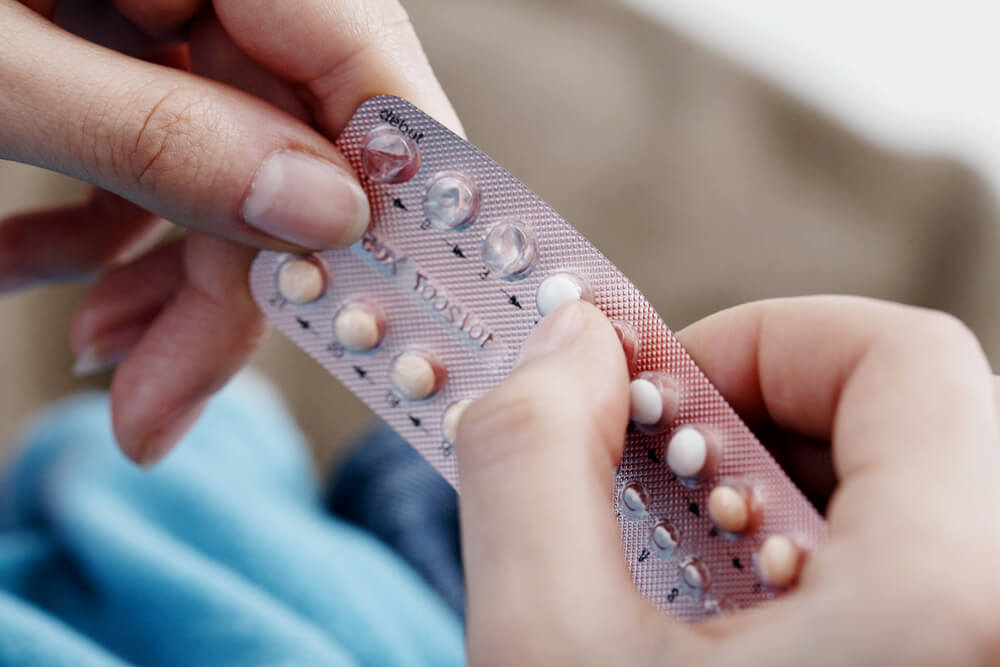If you’re hunting for the best birth control options, you’ve likely come across reviews on using an IUD or a pill. But with the myriad of information available on the internet and the different user experiences, it can be challenging to pick between the IUD vs. the pill. So, which one is better and more efficient? Is switching from the poll to IUD possible? What are the pros and cons of an IUD? This detailed article goes through the most critical facts about an IUD vs. the pill and much more. By the end of this guide, you’ll be ready to decide and choose between these two popular birth control options.
That said, we recommend visiting your healthcare specialist for a birth control exam. You’ll receive custom-tailored advice and expert guidance for your specific needs.
Without further ado, here’s everything you wanted to know about the following birth control options, the IUD vs. the pill.
What is the Pill?
The contraceptive pill, or “the Pill” for short, is one of the most popular birth control options on the market. In essence, the pill is a medication that you regularly take to prevent unwanted pregnancy. These birth control pills provide estrogen and progestin hormones (chemical messengers) to prevent pregnancy. Although the ovaries already produce estrogen, progestin is progesterone’s synthetic form. Typically, a birth control pill will contain estrogen and progestin, but some may only include the latter (these pills are usually used by women who breastfeed).
When a woman is on the pill, the added hormones prevent ovulation and thicken the mucus in the cervix. By doing this, the pill prevents sperm from reaching the woman’s uterus.
In many cases, women seek out birth control options such as the pill to treat hormonal imbalances in the body. In fact, some experts claim that the pill can make periods more regular and less painful, may clear up acne-prone skin, and lower the risk of certain cancers.
If you’re trying to decide between a few birth control options, seek out the guidance of a professional. We recommend looking for a trained birth control doctor for expert results.

Pros and Cons of the Pill
If you’re hesitating about the IUD vs. the pill debate, here are some things to consider about birth control options, such as the contraception pill. These are the pros and cons of using a pill.
By using the pill, you may get regular periods. This benefit is significant for women who want to take charge of their periods. The pill makes your periods regular, allowing you to decide when you’ll be on your menstrual cycle. Namely, pill packs contain “active” pills you take for three weeks, followed by one week of “inactive” or placebo pills. When you take the placebos, you get your period. This quality of the contraceptive pill is helpful for women who are preparing for special events, holidays, or final exams. You can also find new, extended-cycle birth control options that allow you to stop your menstruation altogether.
Birth control pills can also relieve symptoms of endometriosis and prevent the formation of ovarian cysts. Although these compounds won’t cure endometriosis, they may help you control aches and pains by stopping menstrual cycles. Moreover, the pill can keep ovarian cysts at bay.
The pill can also help women with problematic skin and hair growth issues. Since the pill reduces the male hormone levels produced by the ovaries, you may see a reduction of unwanted hair within around six months.
As mentioned, the pill may also protect you from certain cancers. According to sources, the pill may lower your risk of developing ovarian cancer by up to fifty percent. However, in some cases, the pill may raise your odds of cancer. Always speak to a healthcare professional for guidance on whether this is the right birth control option for you.
Most importantly, the birth control pill is more than ninety-nine percent effective at preventing unwanted pregnancy when you take it correctly. However, you will have to adhere to the instructions provided by your doctor and take the pill every day at the same time. You’ll also want to avoid certain medications that may counteract this birth control option. Also, remember, the pill won’t protect you from sexually transmitted diseases. So, to stay safe, we always recommend using a condom and birth control when having sexual intercourse.
What is an IUD?
An IUD or an intrauterine device is a tiny, usually plastic contraceptive device containing progestin or copper. Your healthcare professional will place the IUD into your uterus.
Although the design of the devices varies from one manufacturer to the next, most intrauterine devices feature two threads that go through the cervix’s opening into the vagina. The strings help check the proper placement of the intrauterine device, and they make removal simple.
How does an IUD work? In brief, the intrauterine device prevents the sperm from fertilizing an egg. In addition, due to the progestin in the device, the mucus in the cervix becomes thicker, providing a barrier to the spermatozoid.
Additionally, since the IUD contains copper, it causes inflammation in your uterus that destroys the entering sperm. Moreover, an intrauterine device may prevent implantation by making it challenging for the eggs to adhere to the uterus’s lining.
Pros and Cons of an IUD
If you’re thinking about choosing between an IUD or the pill, you need to be aware of the pros and cons of an IUD. Here are the benefits and drawbacks of this birth control option.
Firstly, you can find both hormonal and non-hormonal intrauterine devices. The hormonal options are great for people who want to shorten or lighten painful periods, and they typically last up to five years. On the downside, hormonal IUDs may increase your risk of blood clots, and they can cause breast tenderness and headaches.
If you are looking for an alternative, a non-hormonal or a copper IUD may be better. A non-hormonal IUD can last up to ten years without the need for replacement and removal. Naturally, since they are hormone-free, you won’t need to worry about the side effects of added hormones in your body. On the downside, some non-hormonal or copper IUDs may cause bleeding between cycles or “spotting” and make menstrual cramps worse.
So what are the pros and cons of an IUD? In a nutshell, the IUD is ninety-nine percent effective at preventing unwanted pregnancy. Also, it’s a reversible birth control option, which means that you’ll be able to conceive as soon as you choose to get it removed. Moreover, one of the most significant benefits of the IUD vs. the pill is that the latter requires maintenance, while an intrauterine device is long-lasting and typically hassle-free. Hence, when choosing between the IUD or the pill, consider your daily routine and habits. For example, do you consider yourself slightly forgetful? Will you remember to take the pill every day at the same time? If your answer is “no,” an intrauterine device may be better.

Can I Switch from a Pill to an IUD?
Yes, you can, but you’ll need to consult your doctor first. Facts reveal that the doctor should insert the IUD seven days before your last pill.
IUD or the Pill: Which One is For Me?
Is the IUD or the pill a good option? Both work well in preventing unwanted pregnancy. However, you’ll need to look at your current lifestyle and habits. Also, if you are planning to conceive shortly after stopping birth control, the IUD may be a better option. Although pregnancy after the pill is possible, some women may take time.
Give us a Call Today
If you’re looking for the best birth control options for you, your daughter, or your best friend, we’re here to help. Book an appointment with us today.


